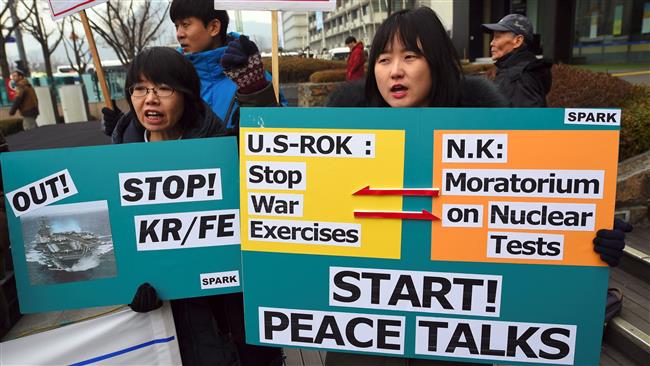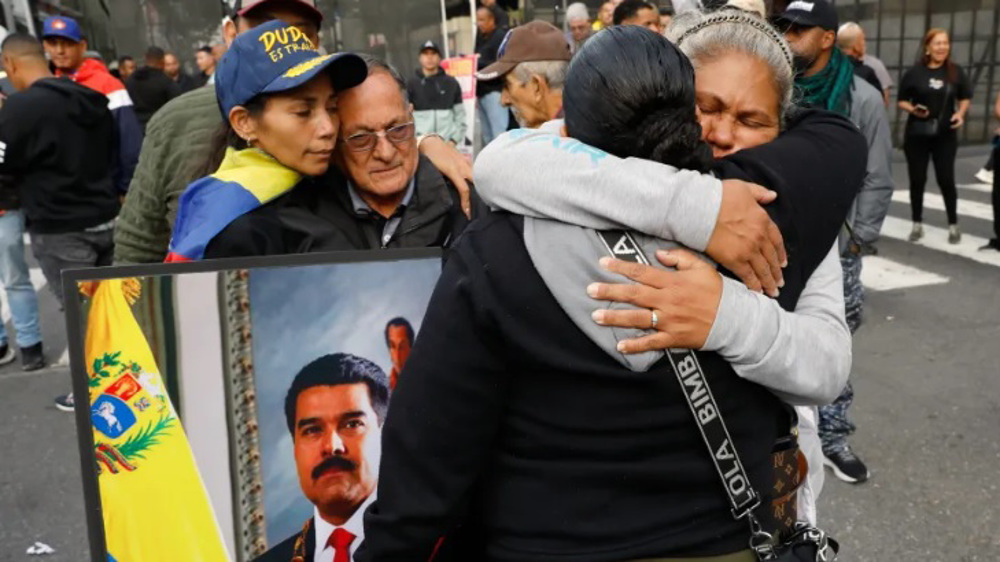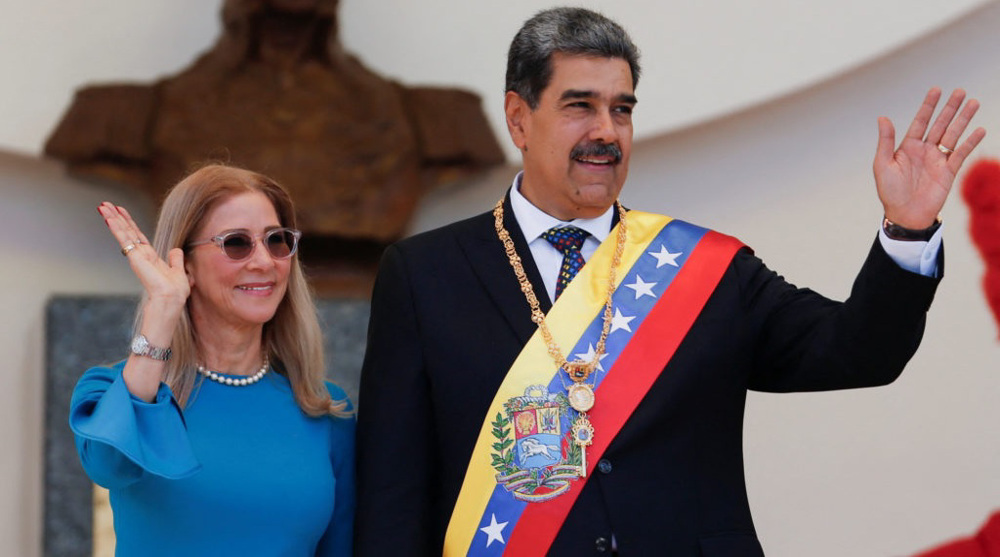US to further stage war games with three carriers as Trump visits Asia
While the US, Australian and South Korean navies are conducting joint exercises in the East China Sea, US officials have also revealed three US aircraft carrier strike groups will exercise together in the Western Pacific in the coming days in a show of unprecedented force as President Donald Trump visits the volatile region.
US officials had previously said the drill involving the three carrier groups was under consideration but the decision to soon go forward with the exercise in the Western Pacific had not been previously announced.
The four officials who discussed the drill with Reuters spoke on condition of anonymity, and did not disclose the precise date or location of the exercise, but revealed the drill would include the aircraft carriers USS Nimitz, the Ronald Reagan, the Theodore Roosevelt and their accompanying warships.
Three US aircraft carrier strike groups have not exercised together in the region since 2007, making the drill an extreme show of force in a region marred by harsh rhetoric stemming from recent tensions over North Korea’s July intercontinental ballistic missile tests, which experts say could reach targets on the US mainland.
The situation has been further complicated by North Korea's test of its most powerful nuclear bomb last month. Pyongyang maintains that the test and other weapons activity are a response to increased provocations by the US on the Korean Peninsula, including its joint military exercises with South Korea.
In his ongoing 12-day trip to Asia, Trump further ramped up his tough rhetoric against North Korea over its nuclear and missile programs. Speaking in Tokyo on Monday, Trump renewed his warning that the “era of strategic patience” with North Korea was over.
The White House says Trump’s trip is intended to demonstrate US resolve over his hard-line approach to the North Korean nuclear and missile threats, but many in the region fear that further bellicose presidential rhetoric could increase the potential for a devastating military conflict on the Korean peninsula.

On Tuesday, Trump will visit South Korea, but will stay half the time he spent in Japan. Trump plans to spend only 24 hours in the country compared to 48 hours in Japan, hinting his uneasy relation with South Korea’s new liberal president Moon Jae-in, who has lately called for diplomatic engagement with Pyongyang – something Trump has called “appeasement.”
”Some people said that my rhetoric is very strong. But look what’s happened with very weak rhetoric over the last 25 years. Look where we are right now,” Trump said in Tokyo.
Maduro’s abduction: China says US cannot act as world’s ‘police’ or ‘judge’
VIDEO | Australians protest over US action in Venezuela
Cuba declares national mourning for 32 citizens killed in US raids on Venezuela
Iran: US must release kidnapped Venezuelan president
After US aggression against Venezuela, Mexico could be next: Report
Qalibaf: Protesters must be heard but foreign-linked agitators will be dealt with
VIDEO | German government refuses to condemn US aggression against Venezuela
Venezuela’s acting president calls for peaceful coexistence, dialogue with US











 This makes it easy to access the Press TV website
This makes it easy to access the Press TV website